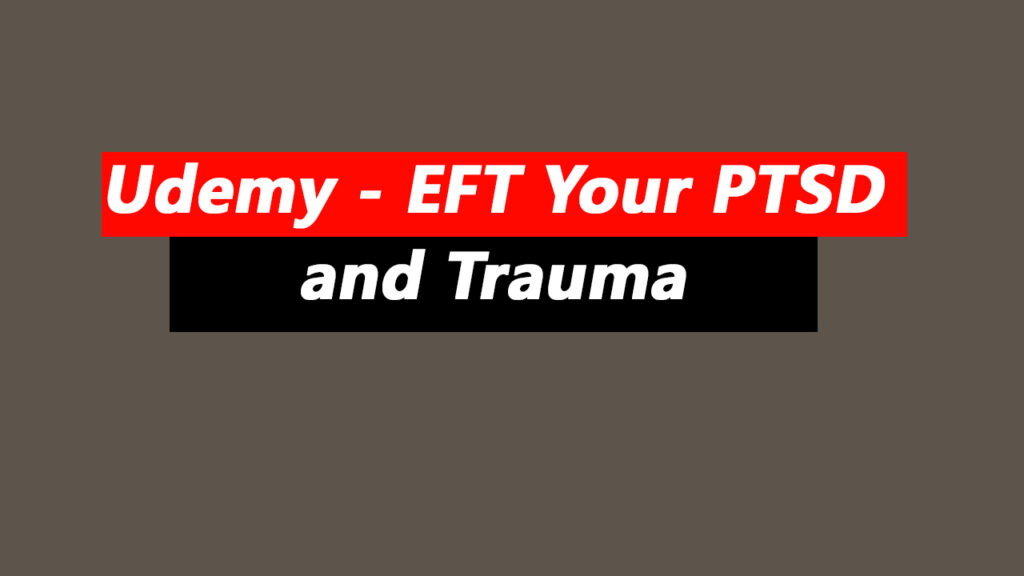
Post-Traumatic Stress Disorder (PTSD) and trauma can have a profound impact on individuals, affecting their mental, emotional, and physical well-being long after the traumatic event has passed. While traditional therapy approaches are valuable, many individuals seek alternative methods for healing and coping with trauma. Enter Emotional Freedom Techniques (EFT), a powerful and innovative tool for addressing PTSD and trauma by tapping into the body’s energy system to promote healing and resilience. In this blog post, we’ll explore how EFT can offer hope and healing to those struggling with PTSD and trauma.
Understanding PTSD and Trauma
PTSD and trauma can result from experiencing or witnessing a deeply distressing or life-threatening event, such as combat, natural disasters, accidents, or interpersonal violence. Symptoms of PTSD and trauma may include intrusive memories, flashbacks, nightmares, hypervigilance, avoidance behaviors, and mood disturbances.
The Impact of PTSD and Trauma:
- Emotional Distress: PTSD and trauma can lead to intense emotional distress, including feelings of fear, anxiety, anger, shame, and guilt, which may disrupt daily functioning and relationships.
- Physical Symptoms: Trauma can manifest in physical symptoms such as headaches, muscle tension, gastrointestinal issues, insomnia, and fatigue, further exacerbating distress and discomfort.
- Impaired Functioning: Individuals with PTSD and trauma may experience impaired social, occupational, and academic functioning, as well as difficulties in maintaining healthy relationships and fulfilling daily responsibilities.
- Risk of Co-Occurring Conditions: PTSD and trauma are often associated with co-occurring conditions such as depression, substance abuse, and other anxiety disorders, compounding the complexity of treatment.
The Power of Emotional Freedom Techniques (EFT)
Emotional Freedom Techniques (EFT), also known as tapping, is a holistic healing modality that combines elements of traditional Chinese medicine with modern psychology. By tapping on specific acupressure points while focusing on traumatic memories, emotions, or physical sensations, EFT helps release emotional blocks, rewire neural pathways, and promote healing and resilience.
How EFT Can Help with PTSD and Trauma:
- Emotional Regulation: EFT helps regulate emotions by reducing the intensity of negative emotions associated with traumatic memories, such as fear, anxiety, and shame, promoting a sense of calm and relaxation.
- Memory Reconsolidation: EFT can facilitate the reconsolidation of traumatic memories, allowing individuals to process and integrate the memories in a less distressing and disruptive manner.
- Body-Mind Connection: By addressing physical sensations and symptoms associated with trauma, EFT helps individuals reconnect with their bodies and cultivate a sense of safety and groundedness.
- Empowerment: EFT empowers individuals to take an active role in their healing journey, providing them with a practical tool for managing symptoms and promoting self-care and resilience.
Udemy’s “EFT Your PTSD and Trauma” Course
Udemy offers a comprehensive course on using EFT to address PTSD and trauma, providing practical techniques, guided tapping sessions, and personalized strategies for healing and recovery. Led by experienced EFT practitioners and trauma specialists, this course offers hope and support to individuals seeking relief from the burdens of PTSD and trauma.
Key Learning Objectives:
- Understanding Trauma and PTSD: Gain insights into the nature of trauma and PTSD, including common symptoms, triggers, and challenges associated with these conditions.
- Introduction to EFT: Learn the basics of EFT tapping, including tapping points, setup phrases, and tapping sequences, to address traumatic memories, emotions, and physical sensations.
- Tapping for Trauma Relief: Discover specific tapping protocols and techniques for reducing symptoms of PTSD and trauma, including anxiety, flashbacks, nightmares, and hypervigilance.
- Self-Care and Resilience: Develop personalized tapping routines and strategies for integrating EFT into your daily life, promoting self-care, resilience, and post-traumatic growth.
Conclusion
Healing from trauma is possible with the power of EFT. By tapping into the body’s energy system and addressing the emotional and physical aspects of trauma, individuals can reclaim their lives, find relief from symptoms, and cultivate resilience and well-being. Enroll in Udemy’s “EFT Your PTSD and Trauma” course today and take the first step toward healing and renewal. Let’s embark on a journey of healing and transformation together, one tap at a time.






